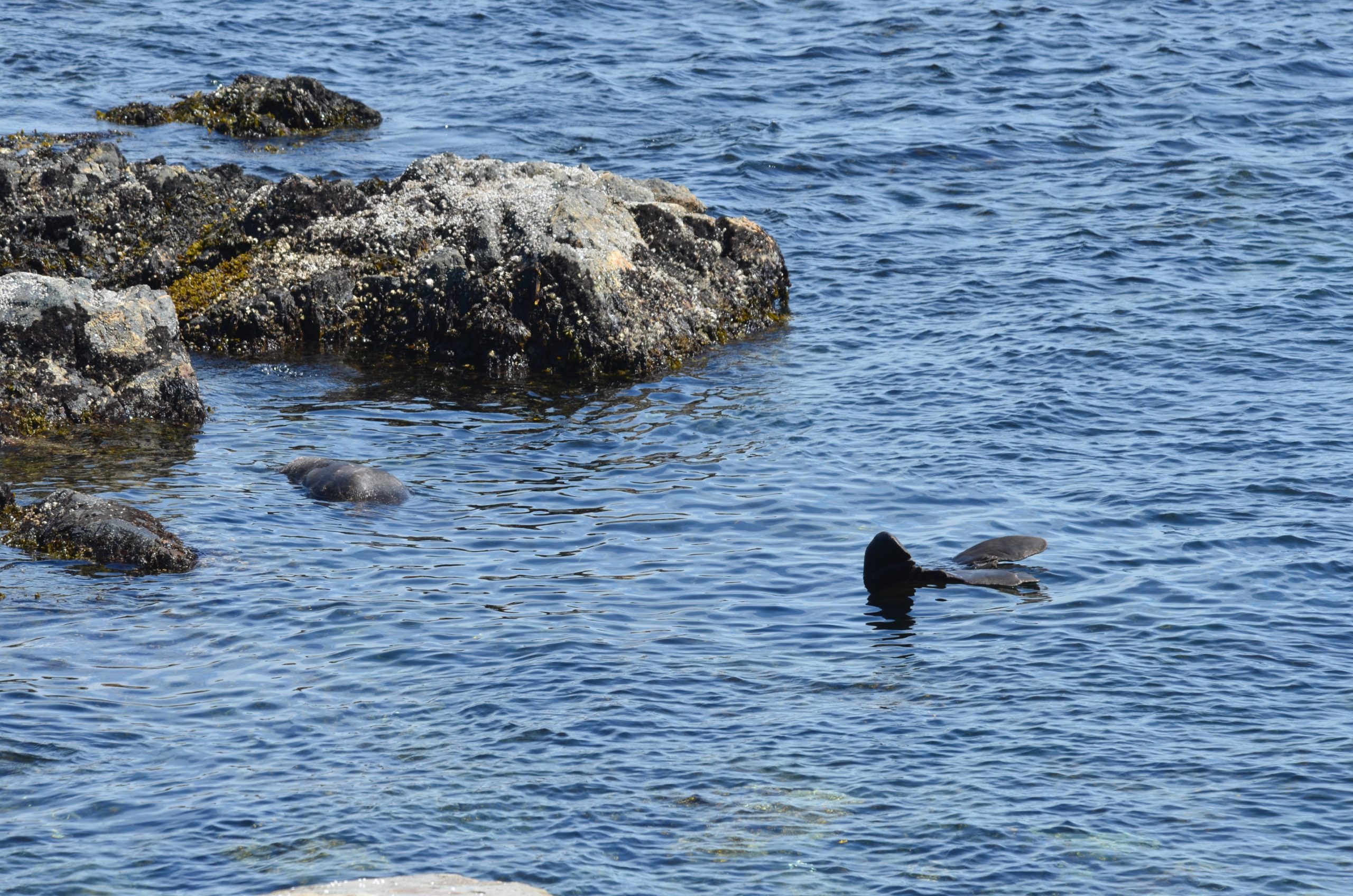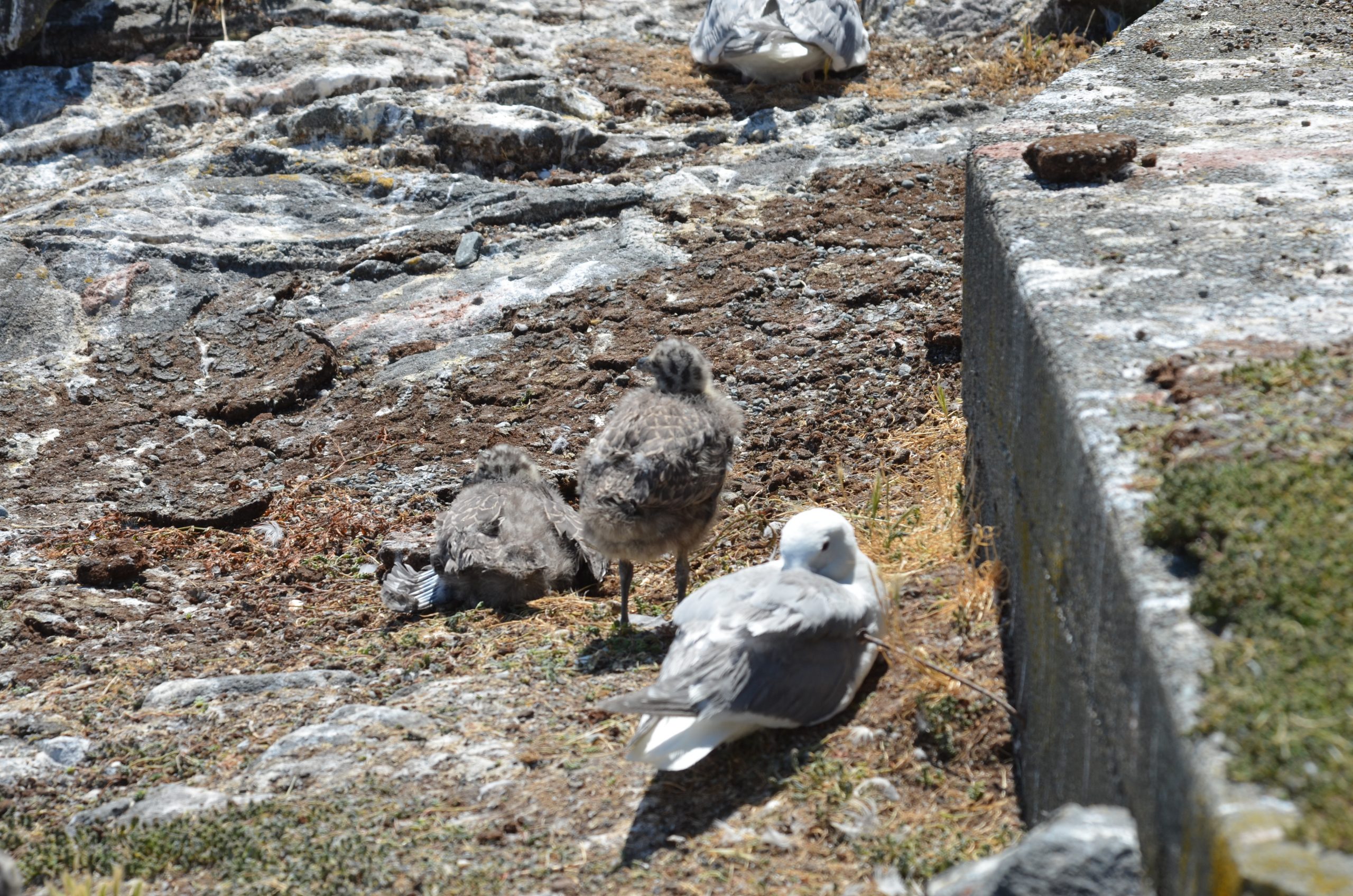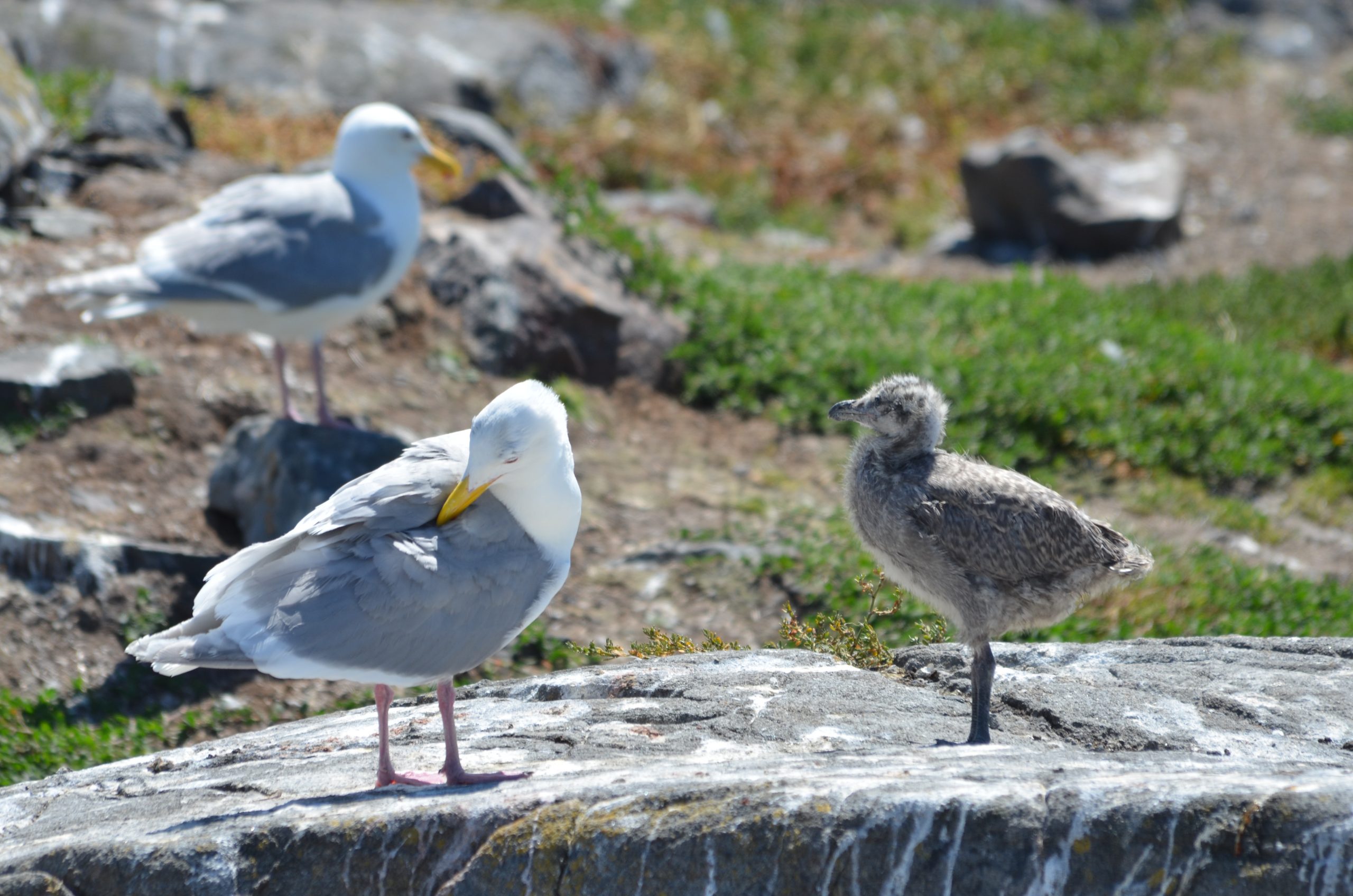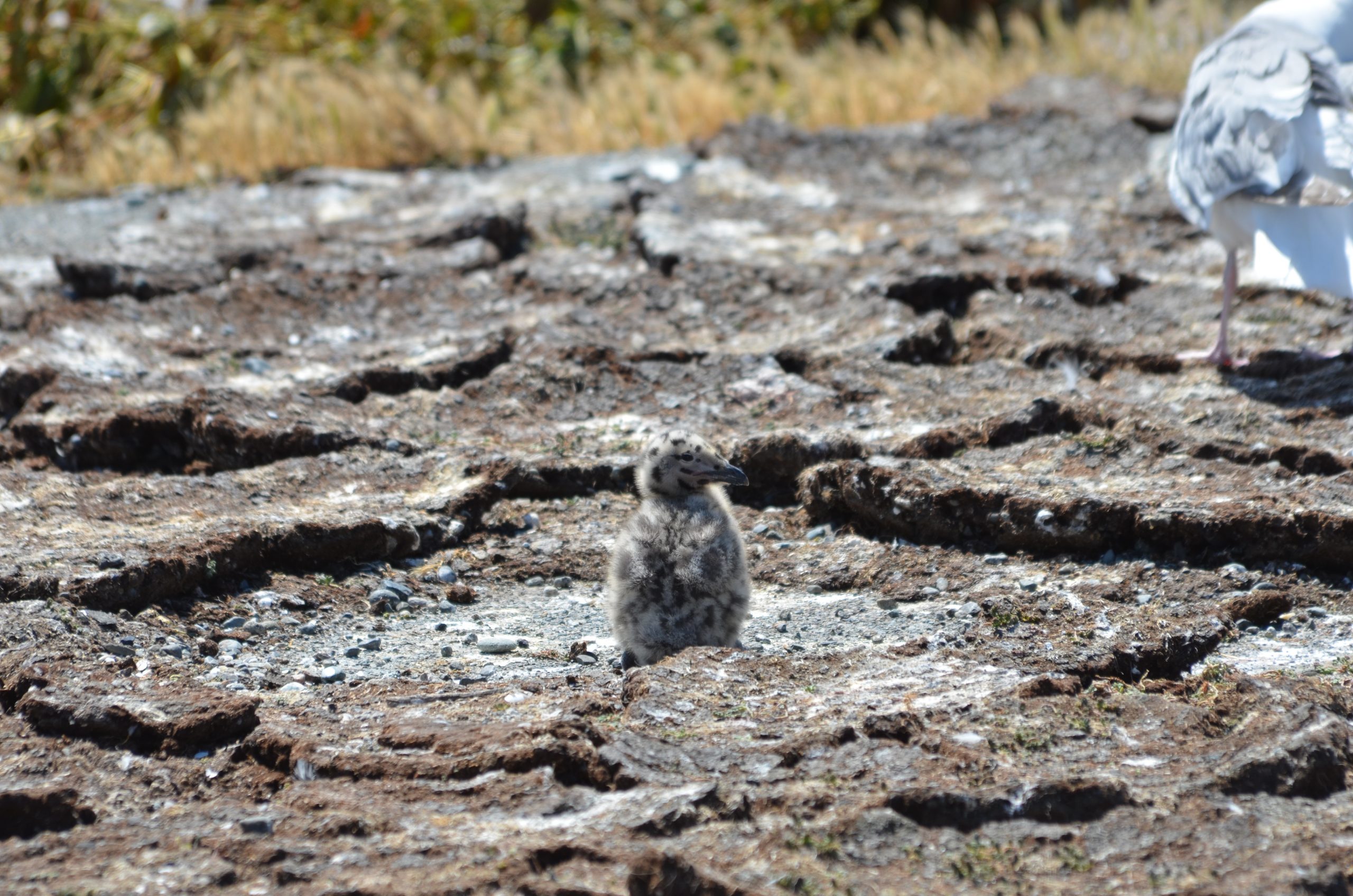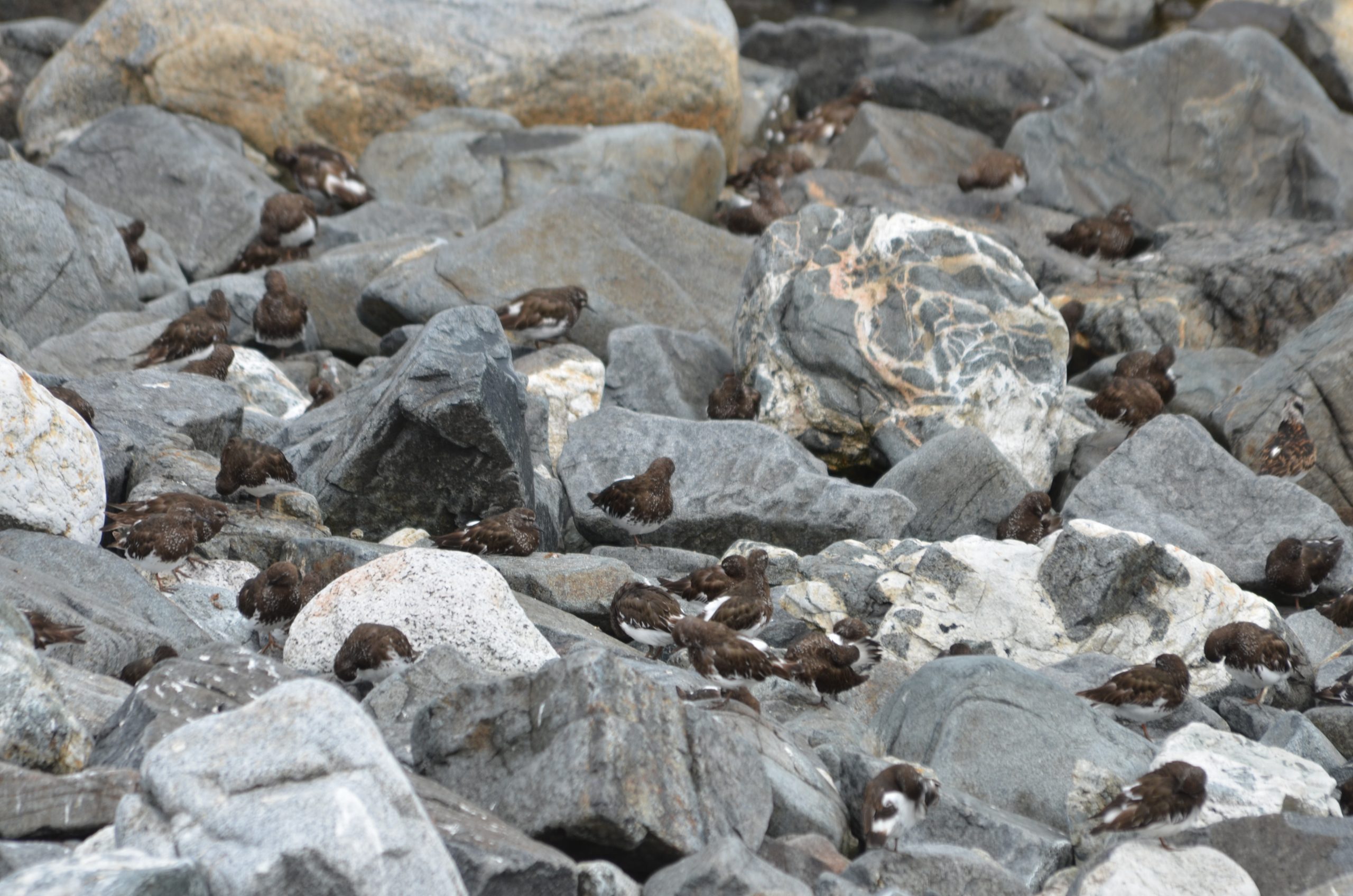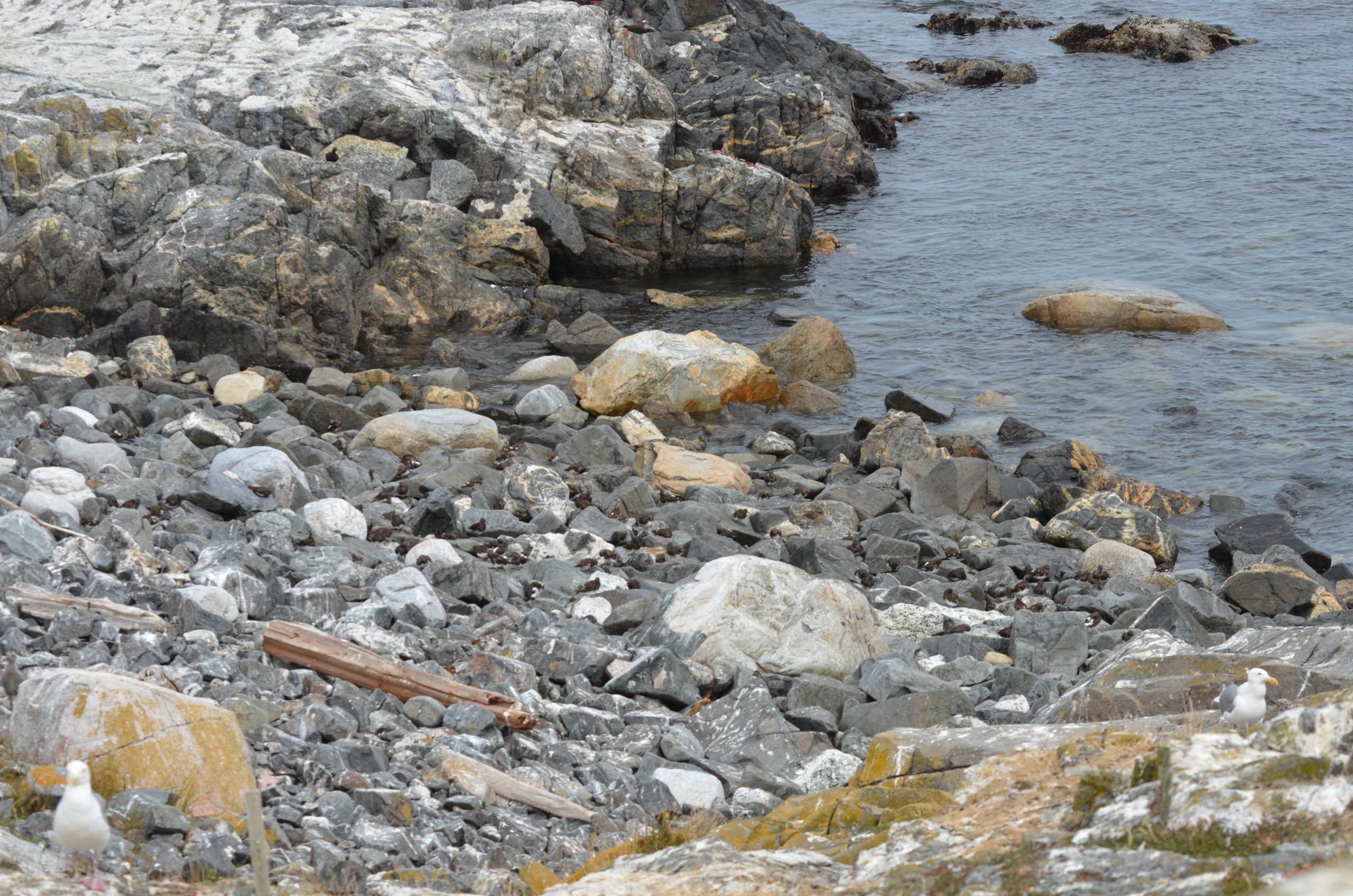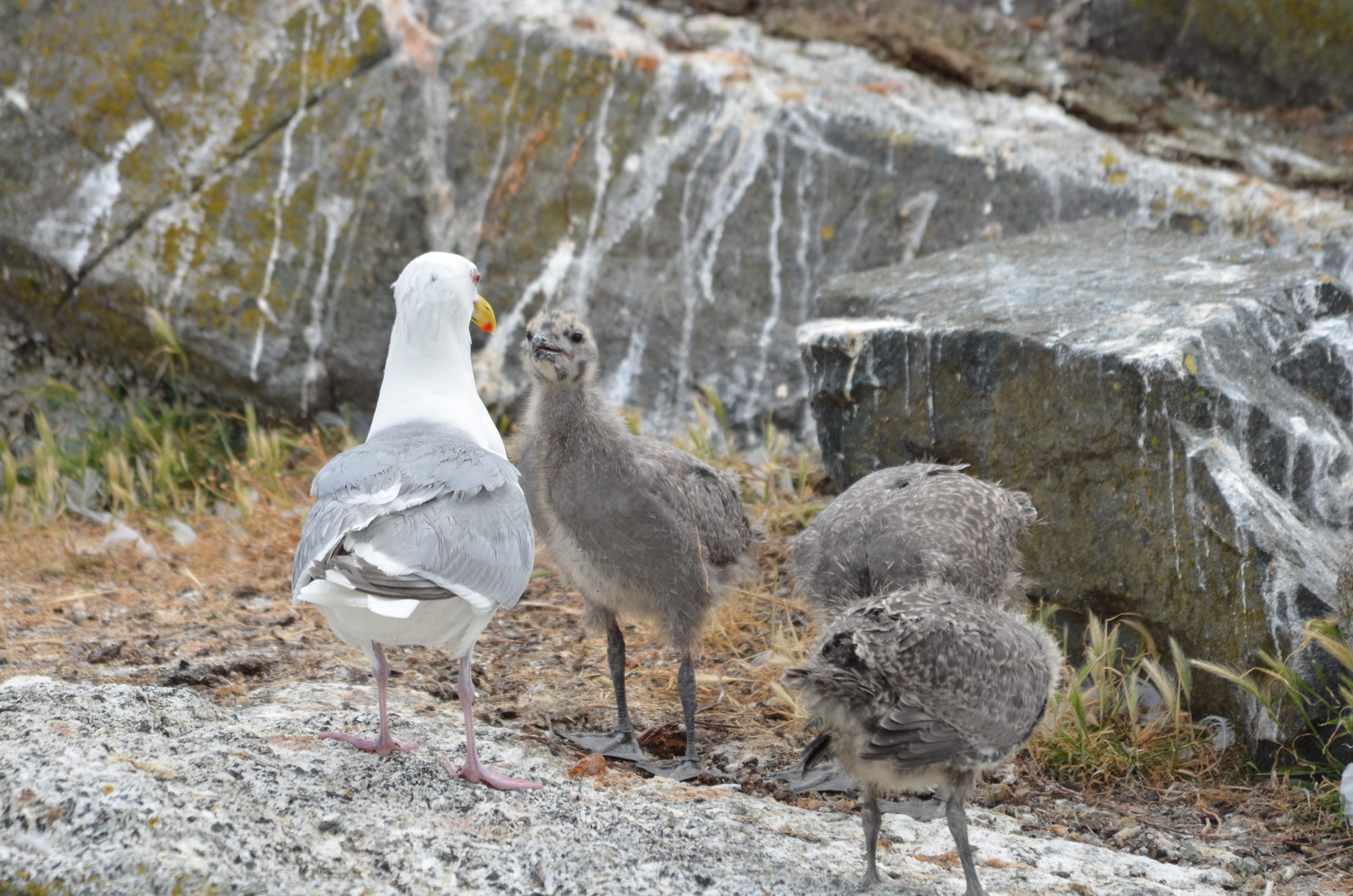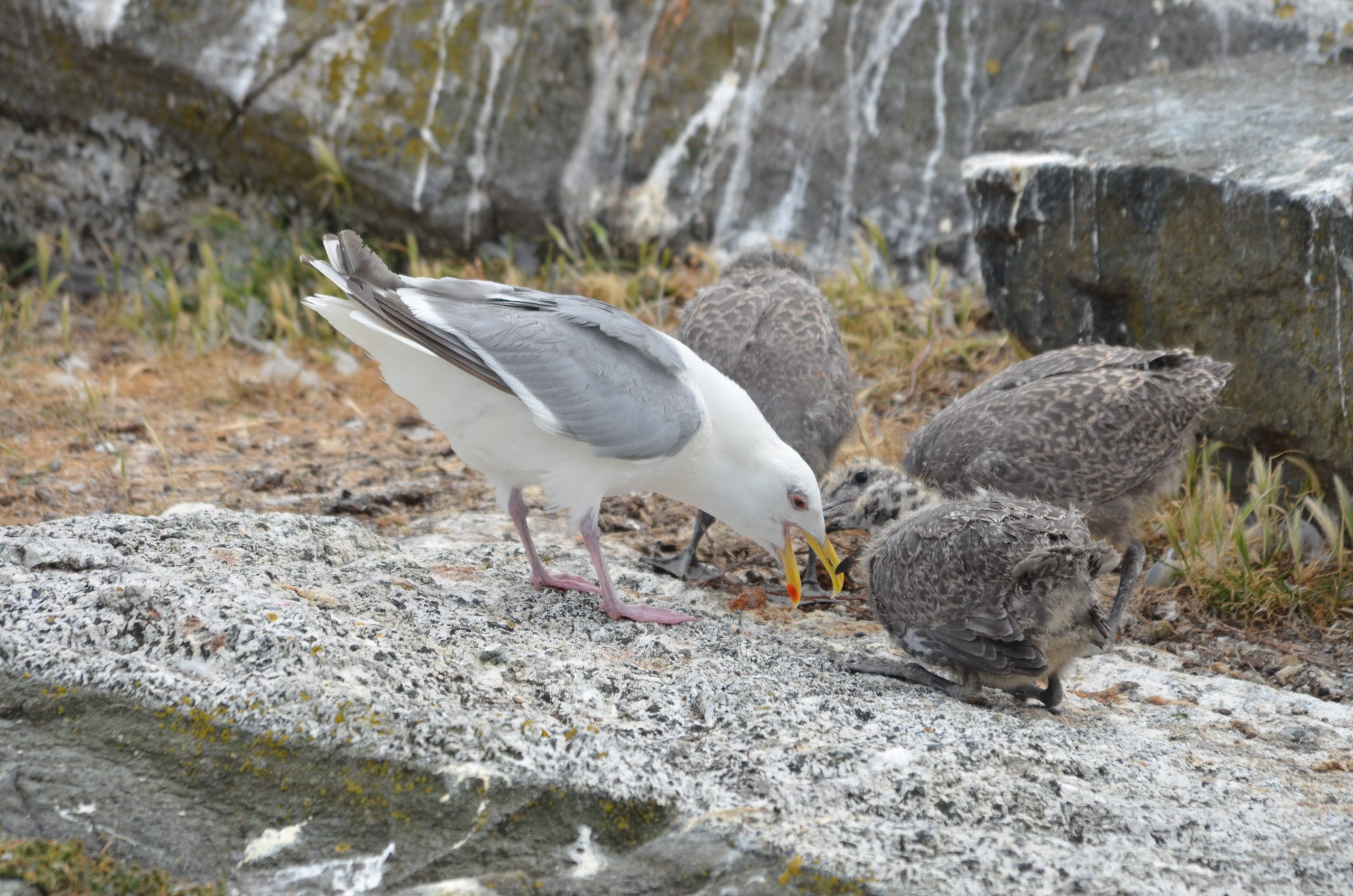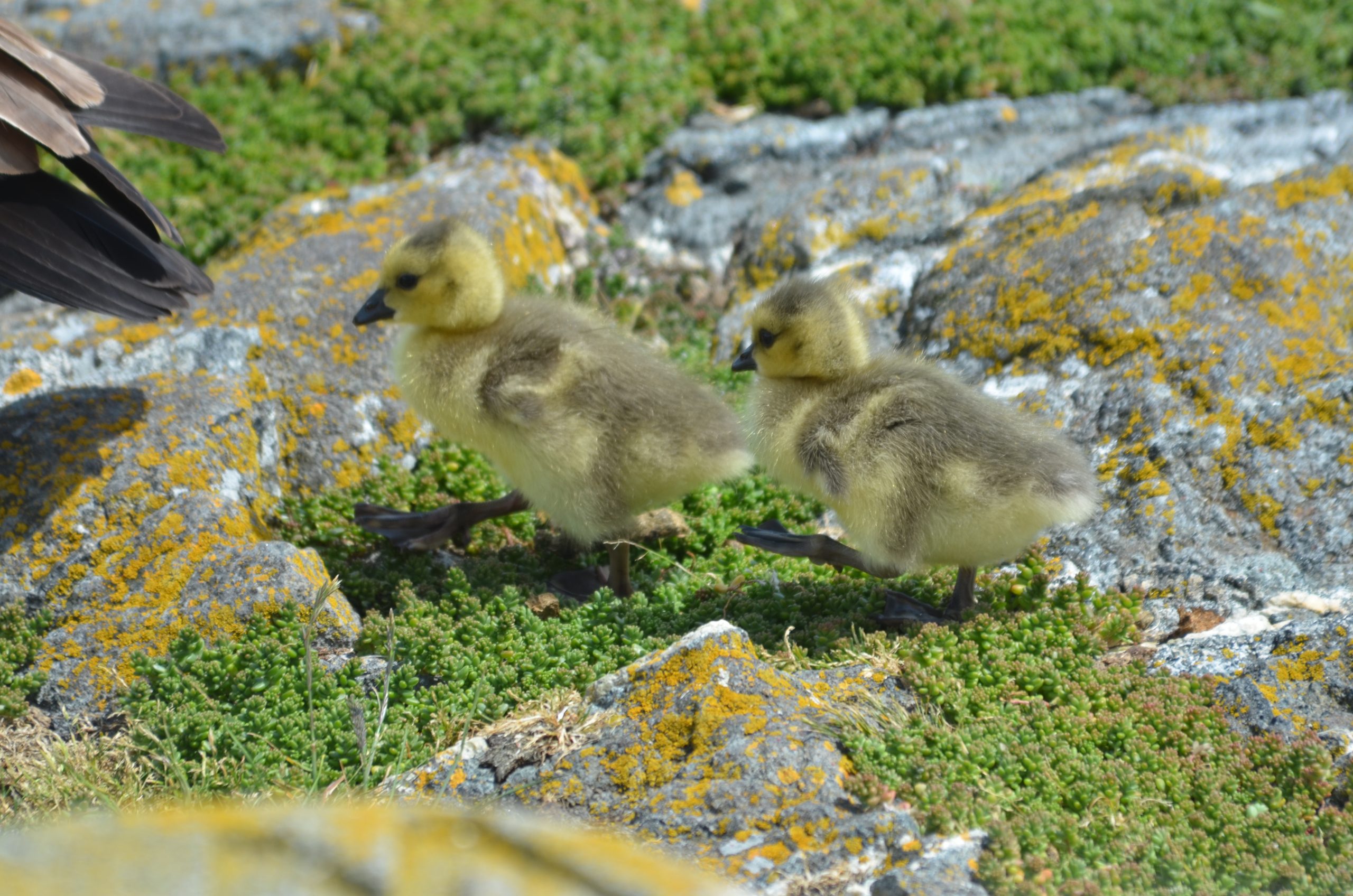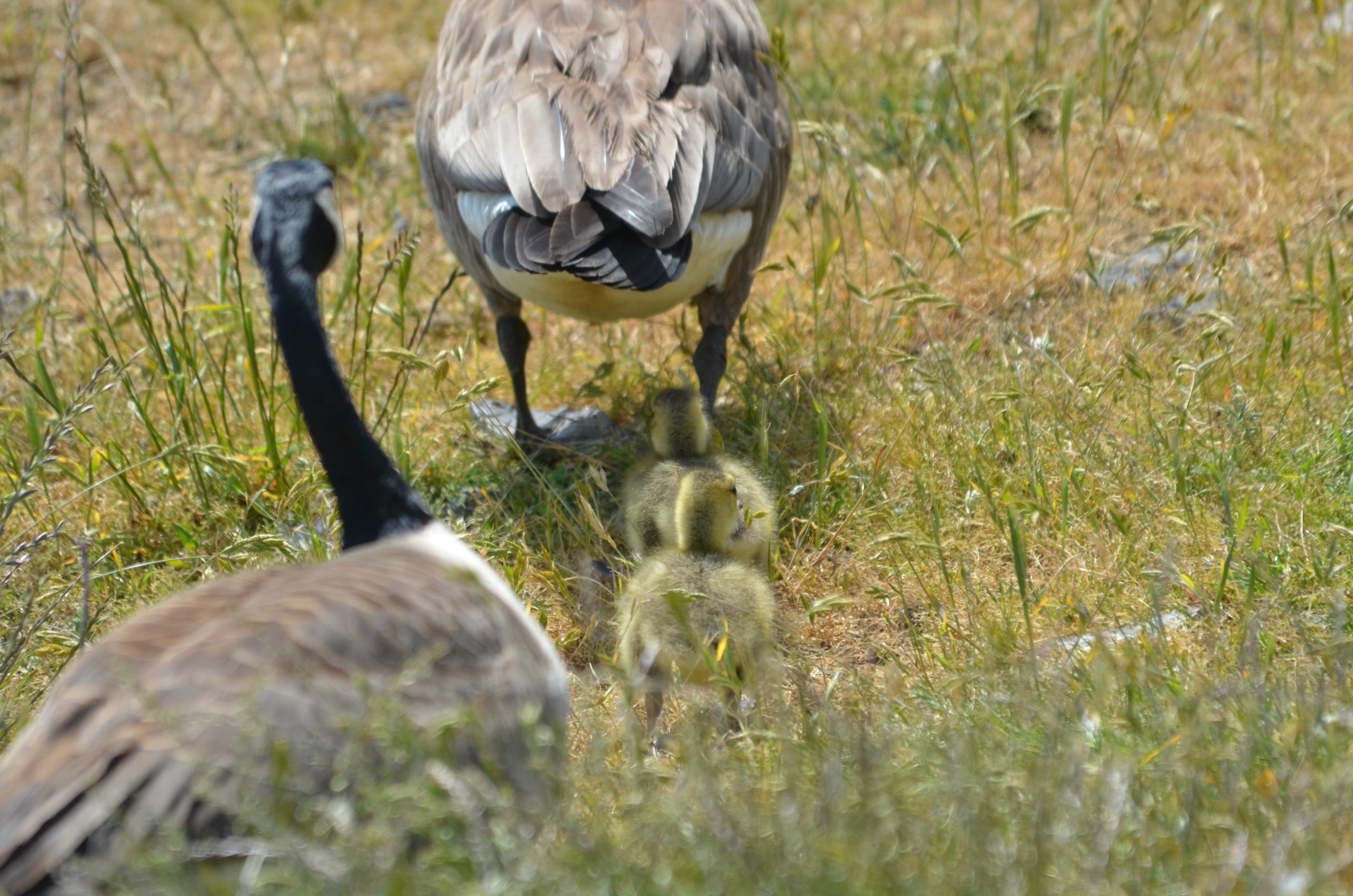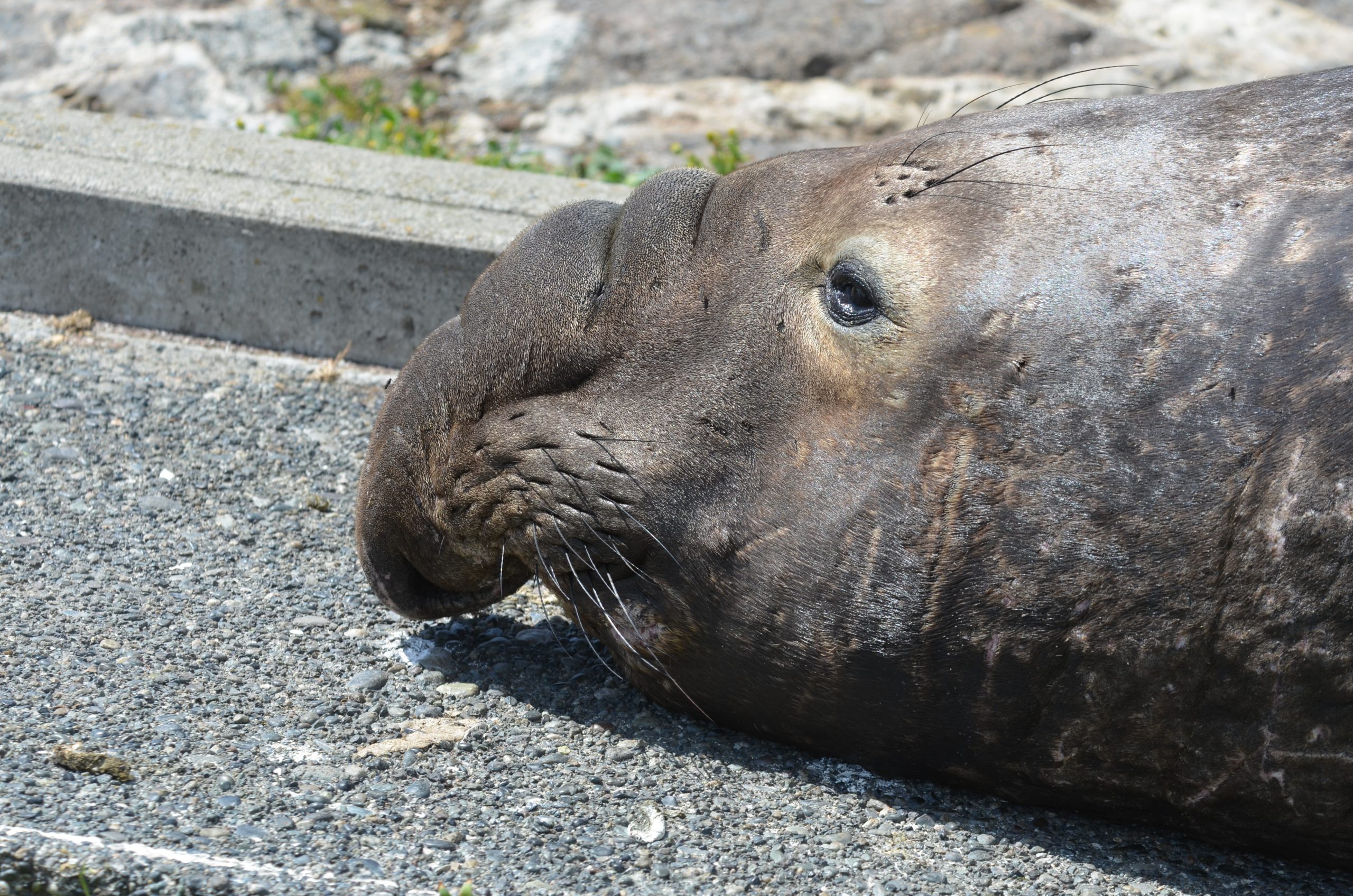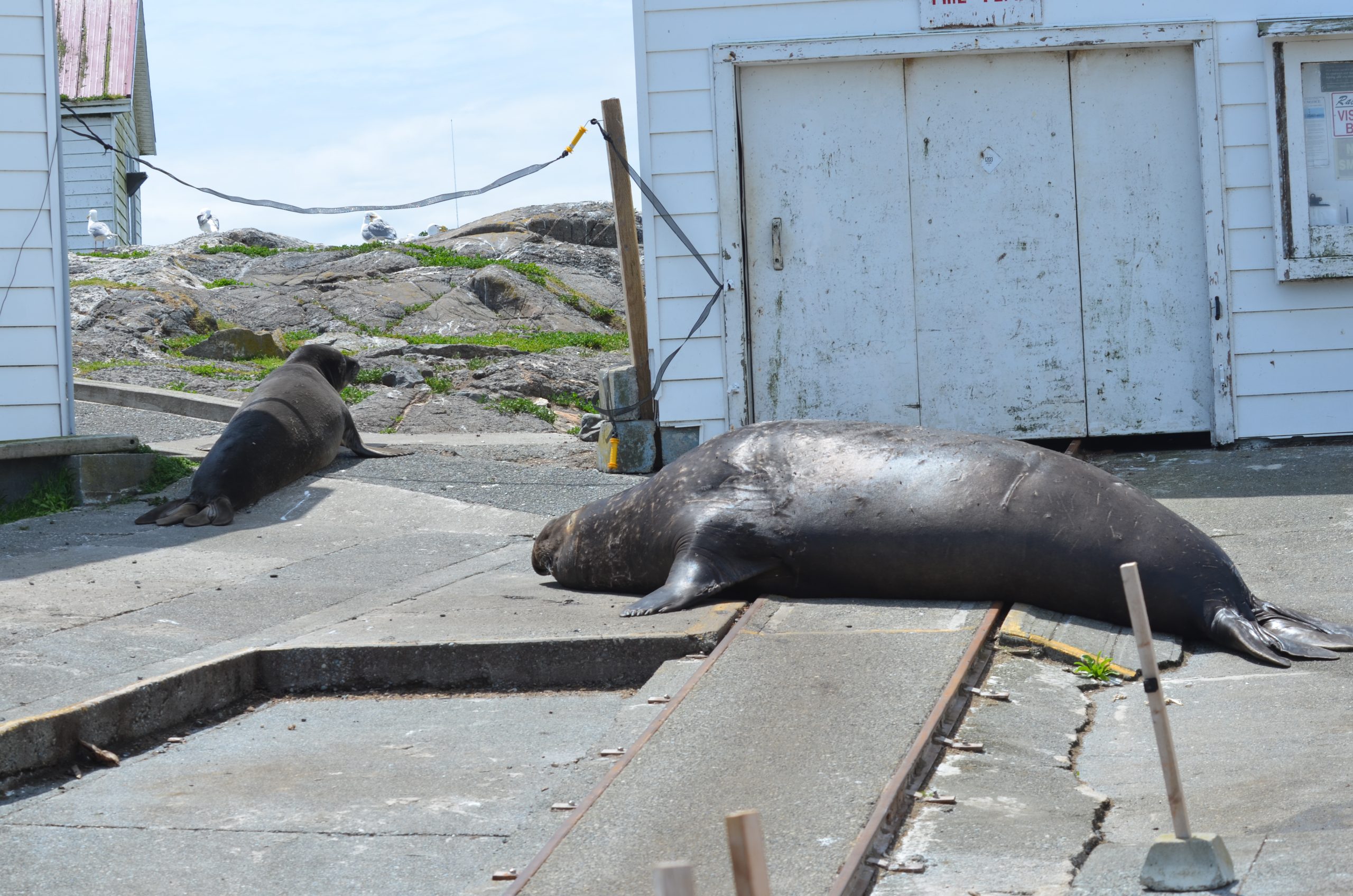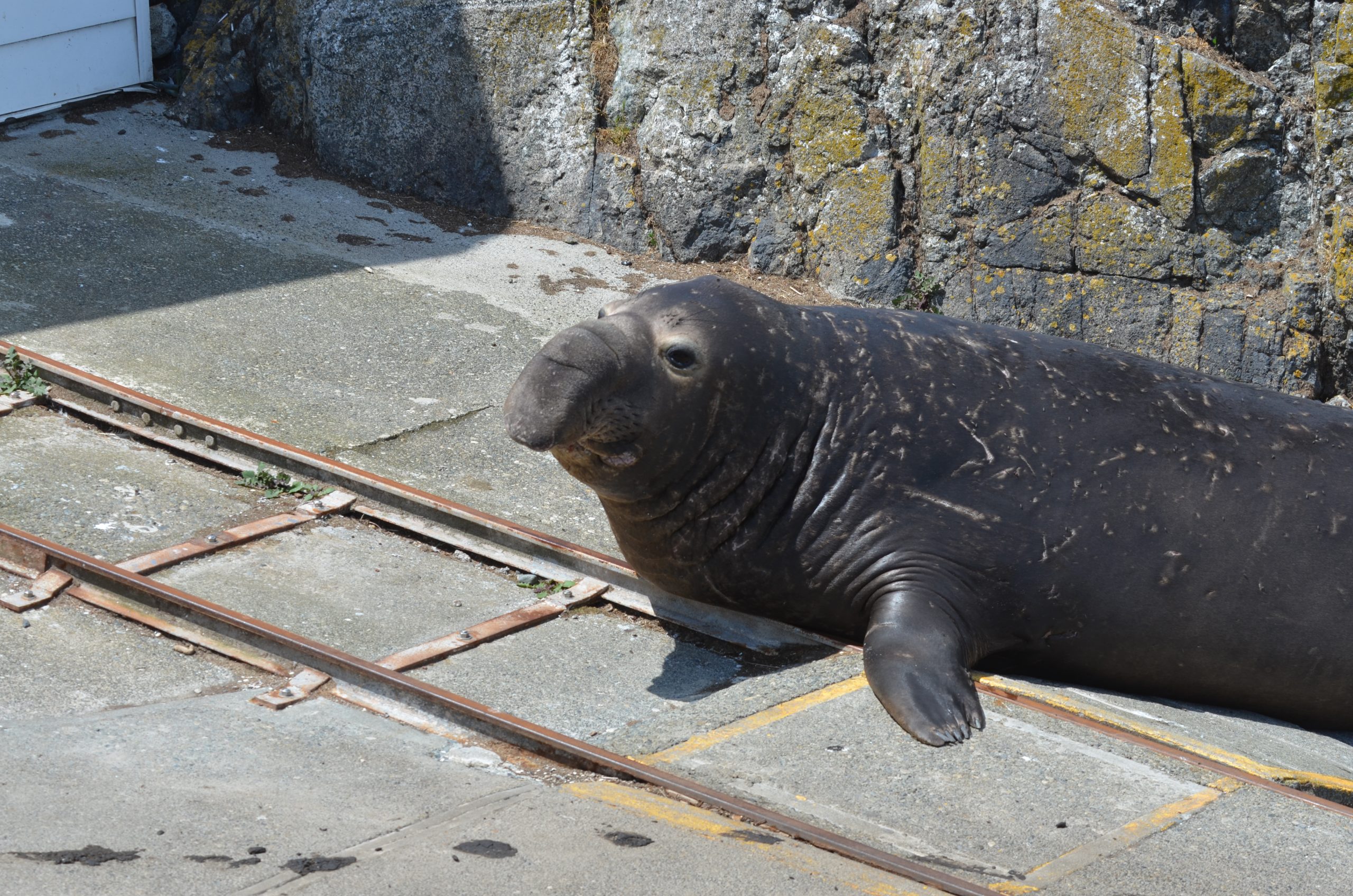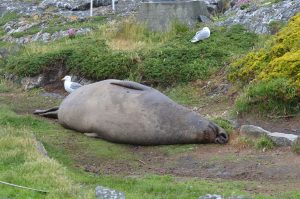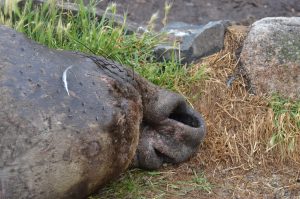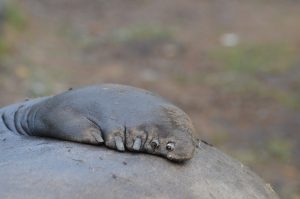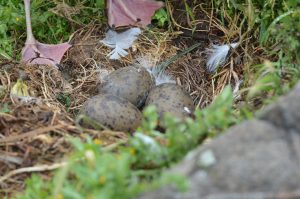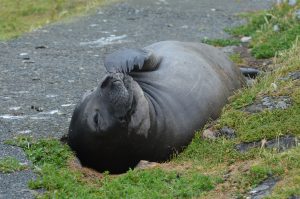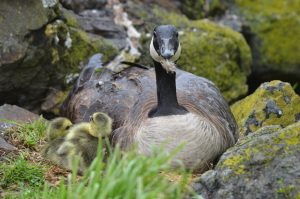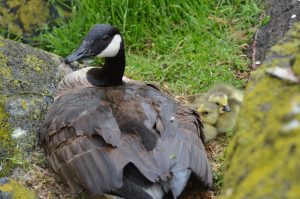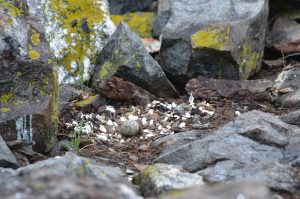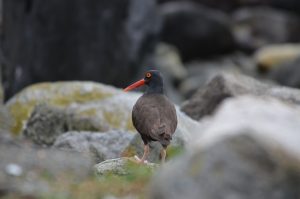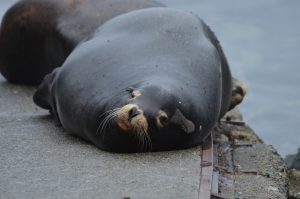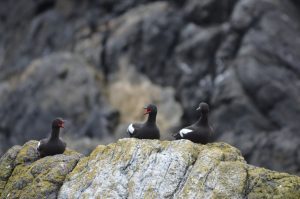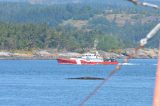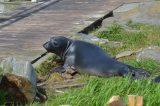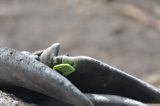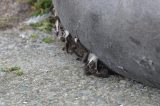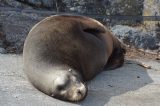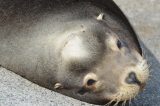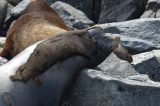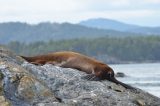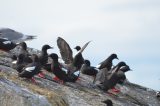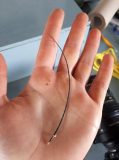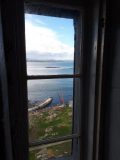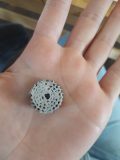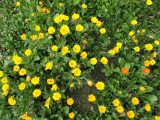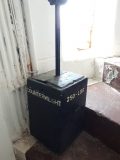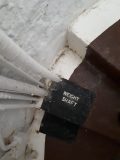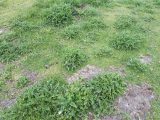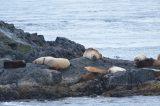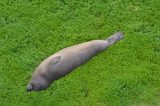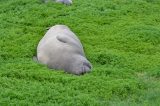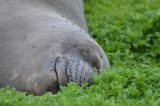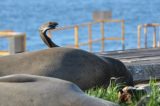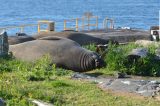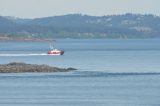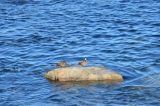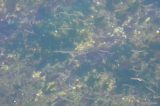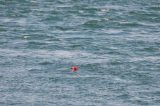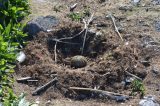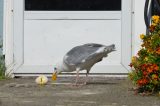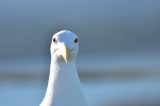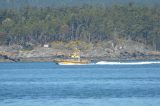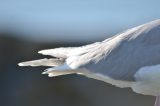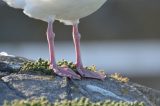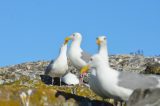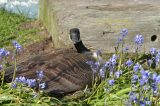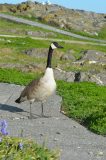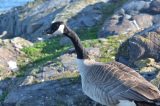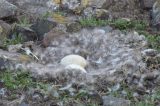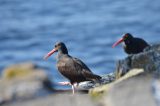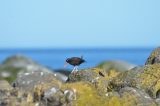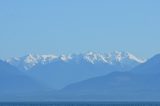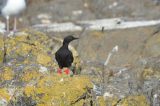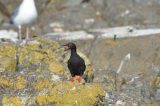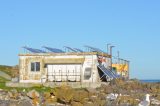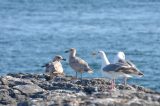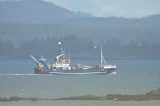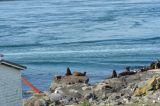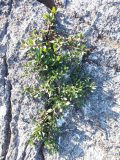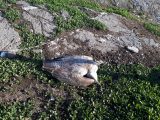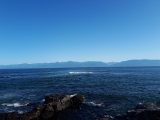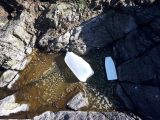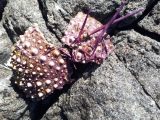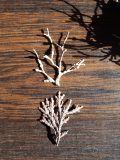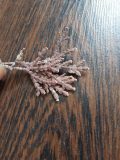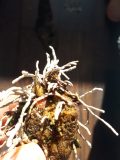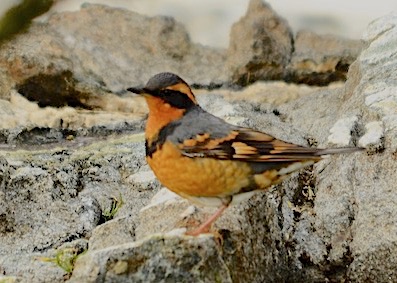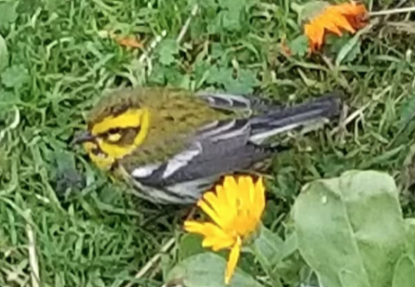Today’s Weather Conditions:
- Sky overcast
- Visibility 15+ NM
- Wind 15-20 knots W
- Sea state: calm, fast moving currents today (almost 5 knots)
- Daily fog in the mornings and often late afternoon as well
Marine Traffic/Island Visitors:
- No island visitors aside from Greg on Thursday with supplies
- Quite a few whale watching boats today and yesterday (20+)
- Not many pleasure crafts passing through the reserve, but many outside of pedder bay (especially yesterday)
- We saw 3 whale watching boats just outside the reserve circle a small group of orcas and follow them under power into the strong currents earlier this afternoon.
Ecological Observations:
- Today we were joined again by elephant seal V173. She was also here in December and again in the late spring when we first arrived. Her left eye is a bit oozy and red, but it seems like it is still functioning properly and she is otherwise looking great! She must have eaten a lot of fish out there- she’s much bigger than the last time we saw her only a few months ago.
- The seagull chicks have been wandering farther away from the safety of their nesting areas, and we have been seeing quite a few more deceased chicks on the ground all around the island. They are being killed by rival gulls protecting their territory and young. There are a few chicks with injuries from these attacks, such as broken legs or wings.
- We found an eviscerated gull chick on our back step on Friday afternoon. It looks quite a bit like a chicken does when a mink kills them (head missing), so we wonder if this is the work of a river otter.
- As mentioned above we observed a few orcas just outside of the reserve earlier today. We have also been seeing humpbacks passing quite far away in the straight.
- The pigeon guillemot nest that we have been observing closely (near our back porch) has at least one chick! We carefully peeked into the crevice and caught a glimpse of a tiny puff of black downy feathers. We are excited to be able to watch their activity so closely from our window as they are very secretive with their movements typically.
- The remaining male elephant seal has been venturing to other parts of the island as his moult is finishing up. He has been finding some creative places to wiggle over rocks into shallow pools heated by water spilling over sun warmed rocks as the tides rise.
- We heard a surfbird’s call today while out near the jetty- it’s a very shrill sound, just like the second recording here.
- Male elephant seal soaking on the E side of RR
- Two chicks with their parent, one chick with a broken wing
- One of the last hatched chicks
- Turnstones
- A large migrating group
- Chick with flight feathers developing
- Three chicks asking for food
- Adult gull regurgitating fish to feed them

